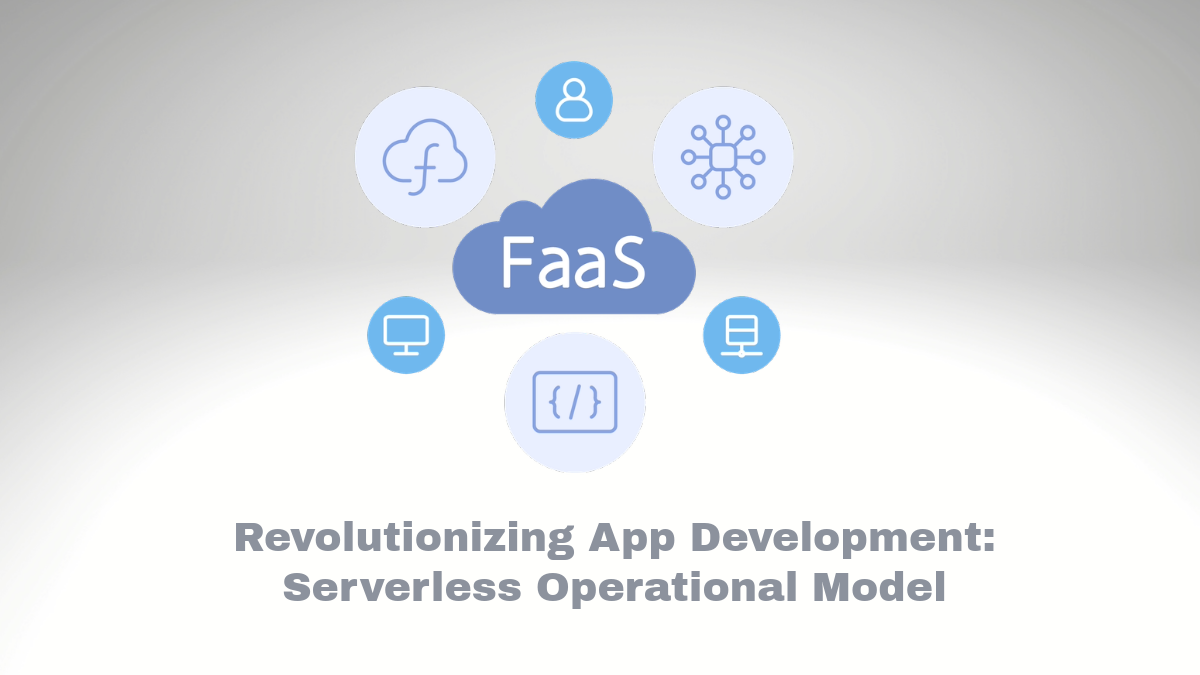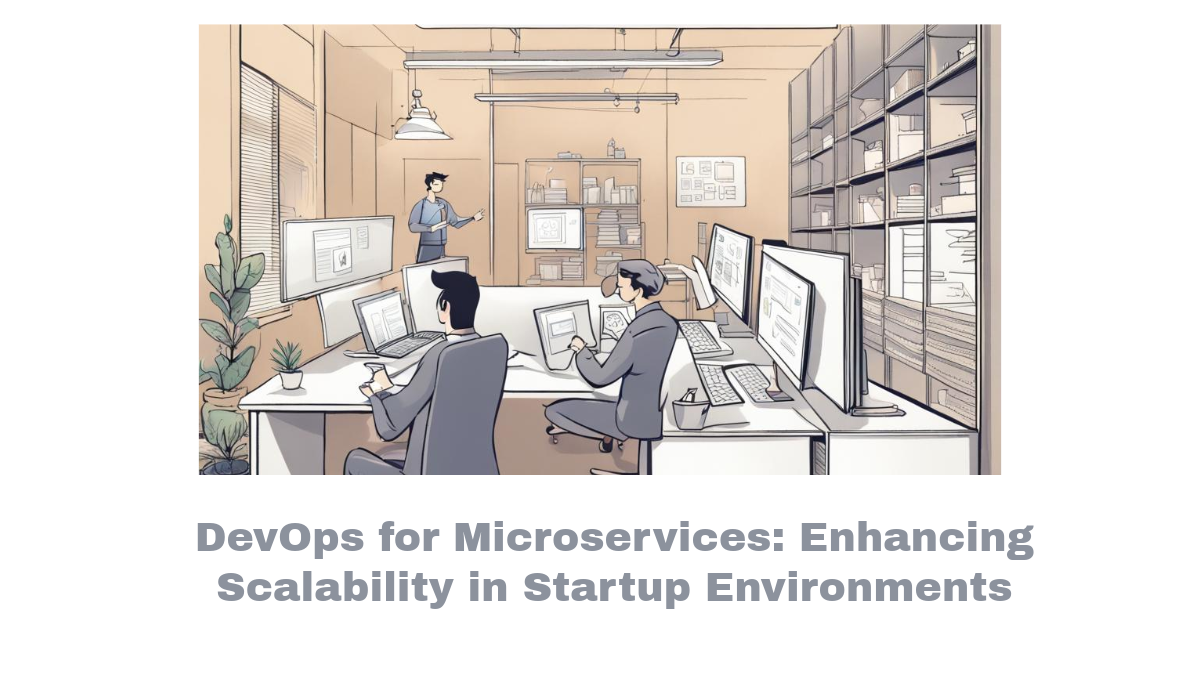Revolutionizing App Development: Serverless Operational Model

Imagine an architectural masterpiece where the steel beams, nuts, and bolts self-adjust to maximize structural performance in any weather condition. An interesting proposition, isn’t it? Now, bring this level of flexibility and autonomy into the sphere of app development with serverless computing. This revolutionary concept has drastically altered the landscape of modern app development.
Like the adaptable masterpiece in our analogy, a serverless operational model helps you build applications that can automatically scale and adapt based on user demand while minimizing operational overheads. The essence of serverless computing resides in letting developers focus on their core competencies: coding applications while abstracting away infrastructure management – similar to how our architects would only need to work on designing beautiful buildings while not worrying about the tedious task of adjusting nuts & bolts.
In this article, we will explore the concept of serverless computing and its advantages over traditional models, such as cost efficiency and improved scalability. We will also explore its application in modern app development, which provides a speed boost & productivity enhancement by enabling easier deployment and updates. Moreover, we’ll provide real-world case studies illustrating how businesses have found success with this cutting-edge technology.
However wonderful this may sound though, adopting a new model is usually fraught with challenges. Hence, we will shed light on some difficulties faced during implementation before concluding with insights into the future of app development through the lens of serverless technology.
Now, let’s dive deeper into this fascinating world where managing servers become a thing of the past!
Introduction to Serverless Operational Model
In the ever-evolving domain of information technology, adaptation is key. Among the numerous transformative technologies introduced, serverless computing makes bold strides in this innovative environment by proposing an operational model that defies conventional norms.
Over the years, IT infrastructure has been dominantly defined by servers. However, a serverless model demands a radical shift away from server-oriented systems management to focus on service-oriented solutions. This abstracts away from traditional infrastructure and replaces it with an automated process handed over to cloud providers.
Understanding the Concept of Serverless Computing
So, what precisely does ‘serverless’ refer to? It doesn’t imply that there are no servers (as one might misconceive). On the contrary, servers are still involved, but their maintenance and operation become invisible behind user-facing APIs. Serverless refers to applications where server management and capacity planning decisions are completely abstracted from the developers.
Under this model, developers can fully concentrate on writing and deploying code without concern for personally maintaining or scaling infrastructure. By taking advantage of ‘Backend-as-a-Service’ (BaaS) and ‘Function-as-a-Service’ (FaaS) options offered by companies such as AWS, Google Cloud, or Microsoft Azure provides us a toolset that negates wasted time on peripheral tasks not directly associated with application development.
Differences between Traditional and Serverless Computing
Underpinning this new way of running applications is an inherent difference that sets serverless computing apart from traditional hosting methods. A traditional structure necessitates constant provisioning and maintenance of servers for backend operations. It involves a significant investment in system administration, which often distracts enterprise resources distantly from their core business objectives.
On the other hand, under a serverless framework, all these aspects are delegated to your cloud service provider, who takes care of them at scale with automation tools. The immediate benefits include reduced overheads and augmented developer productivity, allowing businesses to focus on their core competencies instead of dealing with hardware and software management hassles.
The Shift towards Serverless Architecture
The need for digital agility in this competitive environment largely drives the shift towards a serverless architecture. Every fraction of a second’s delay can cost enterprises enormously lost opportunities. As such, businesses are increasingly looking at prospects to optimize operations without compromising scalability or performance.
A serverless setup offers unprecedented opportunities for businesses to achieve high levels of efficiency, redefining traditional norms of application development. With its significant benefits—elimination of administrative tasking, lower cost structure, enhanced scalability capabilities—it becomes apparent why there’s a paradigm shift from traditional server-dependent architecture towards embracing this novel serverless model.
Furthermore, this architectural approach has significantly influenced the development landscape by enabling modern applications and services that could be scaled on demand. Everyone is gradually exploring and embracing the promising world of serverless computing, from small startups to enterprise-level corporations.
Yet traversing the path to a serverless framework isn’t without challenges; understanding these pitfalls and planning appropriately is equally pivotal to fully harness its benefits in various spheres like IoT (Internet Of Things), AI (Artificial Intelligence), Big Data Analytics – all arms in which seamless functionality is prime.
Benefits of Serverless Computing Serverless
Cost Efficiency
The financial implications are a crucial advantage of serverless computing in app development. Since you only pay for the consumed computational resources, it eliminates the need for idle running servers, dramatically reducing hosting costs.
Improved Scalability
Scalability becomes more manageable with a serverless approach as it inherently supports automatic scaling. Based on the demand, applications can easily scale up or down without human intervention, catering effectively to fluctuating workloads.
Speed and Productivity Boost
With infrastructure management issues off their heads, developers can concentrate solely on writing code. This results in faster deployments and increased productivity as there’s less time wasted in managing servers.
Serverless Computing in Modern App Development Serverless computing has matured into a core component for modern application development. From abstracting away infrastructure management to effortless deployment—serverless is paving the way for leaner dev operations.
Abstracting Away Infrastructure Management
With serverless computing, developers get absolved from the tasks of provisioning and managing servers. This allows them to focus purely on creating innovative apps while providers take care of backend infrastructure.
Easier Deployment and Updates
Simple code updates or application rollbacks become straightforward with serverless computing. The ease enhances developer flexibility and ensures quicker adjustments based on real-time user feedback.
Case Studies of Success with Serverless Architecture
App Development Numerous start-ups and large corporations have significantly improved after adopting serverless architecture.
Netflix:
Netflix, the popular streaming service, moved to a serverless architecture to handle its massive user base and varying streaming demands efficiently. They’ve benefited from automatic scaling, reduced operational overhead, and improved cost-effectiveness.
Airbnb:
Airbnb adopted serverless computing to enhance the performance of its website and mobile applications. This allowed them to handle sudden spikes in user traffic during peak booking times without manual intervention.
Nordstrom: Nordstrom, a leading fashion retailer, leveraged serverless architecture to improve its e-commerce platform’s performance. They experienced faster load times, reduced downtime, and cost savings.
Capital One:
Capital One used serverless technologies to develop and deploy applications while ensuring security and compliance rapidly. This approach allowed them to innovate faster in the financial services industry.
Slack: Slack, the team collaboration platform, implemented serverless computing to enhance the scalability and responsiveness of their chat application. This helped them support a growing user base without service interruptions.
Supercell: Supercell, the mobile game developer known for titles like Clash of Clans, adopted serverless architecture to improve the backend infrastructure of their games. It enabled them to focus on game development while AWS Lambda managed server provisioning.
Fintech Startups:
Many fintech startups have rapidly embraced serverless architecture to develop and deploy financial applications. They benefit from cost-efficient scaling and quick development cycles. Please note that while these are real examples of companies that have successfully adopted serverless architecture, specific details, and case studies may vary. It’s important to research each company’s journey further to better understand their success with serverless computing.
Challenges in Implementing Serverless Architecture
| Challenge | Description | Solution |
|---|---|---|
| Cold Start Latency | Serverless functions may experience a delay when first invoked due to the need to initialize resources. | Use provisioned concurrency to pre-warm instances and reduce cold start impact. |
| Vendor Lock-In | Serverless platforms may tie you to a specific cloud provider, limiting flexibility and portability. | Design applications with portability in mind using common serverless frameworks. |
| Limited Debugging | Debugging serverless functions can be challenging, as traditional debugging methods may not apply. | Invest in comprehensive monitoring and observability tools like AWS X-Ray or Datadog. |
| Security Concerns | Serverless functions can be vulnerable to security threats if not configured properly. | Implement strong IAM (Identity and Access Management) policies to ensure only authorized users and services can invoke your functions. Use encryption for data in transit and at rest, and follow security best practices for serverless applications. |
| Scalability Challenges | While serverless platforms offer automatic scaling, you may still encounter challenges in fine-tuning and optimizing the scalability of your functions. | Conduct load testing and performance optimization to identify bottlenecks and optimize your code. |
| Complexity in State Management | Managing stateful data in a stateless serverless environment can be complex. | Use external state management services for stateful data and implement idempotent operations. |
| Cost Management | Without proper monitoring and control, serverless costs can escalate quickly. | Set up budget alerts, throttling, and rate limiting to manage costs effectively. |
| Development and Testing | Developing and testing serverless functions locally can be challenging. | Use local development environments and testing frameworks for easier testing and debugging. |
Conclusion
In conclusion, serverless computing is certainly reshaping the landscape of app development. With its promise of cost efficiency, unbeatable scalability, and increased productivity, it’s no wonder developers worldwide are embracing this revolutionary technology. Despite the occasional challenges in implementation, the trade-off unquestionably leans towards greater flexibility and autonomy in app development. There are no infrastructure management strains or bulky servers – simply efficient, intuitive app deployment and updates. Real-world applications have already begun enjoying the fruits of this technology, a clear testament to its success. Yet, the journey is far from over; serverless computing continues to evolve, promising even greater possibilities. As we navigate this exciting era of app development, why not delve deeper into the world of serverless computing? See firsthand how it’s defining the future and find out how you, too, can leverage its myriad benefits!




Comments